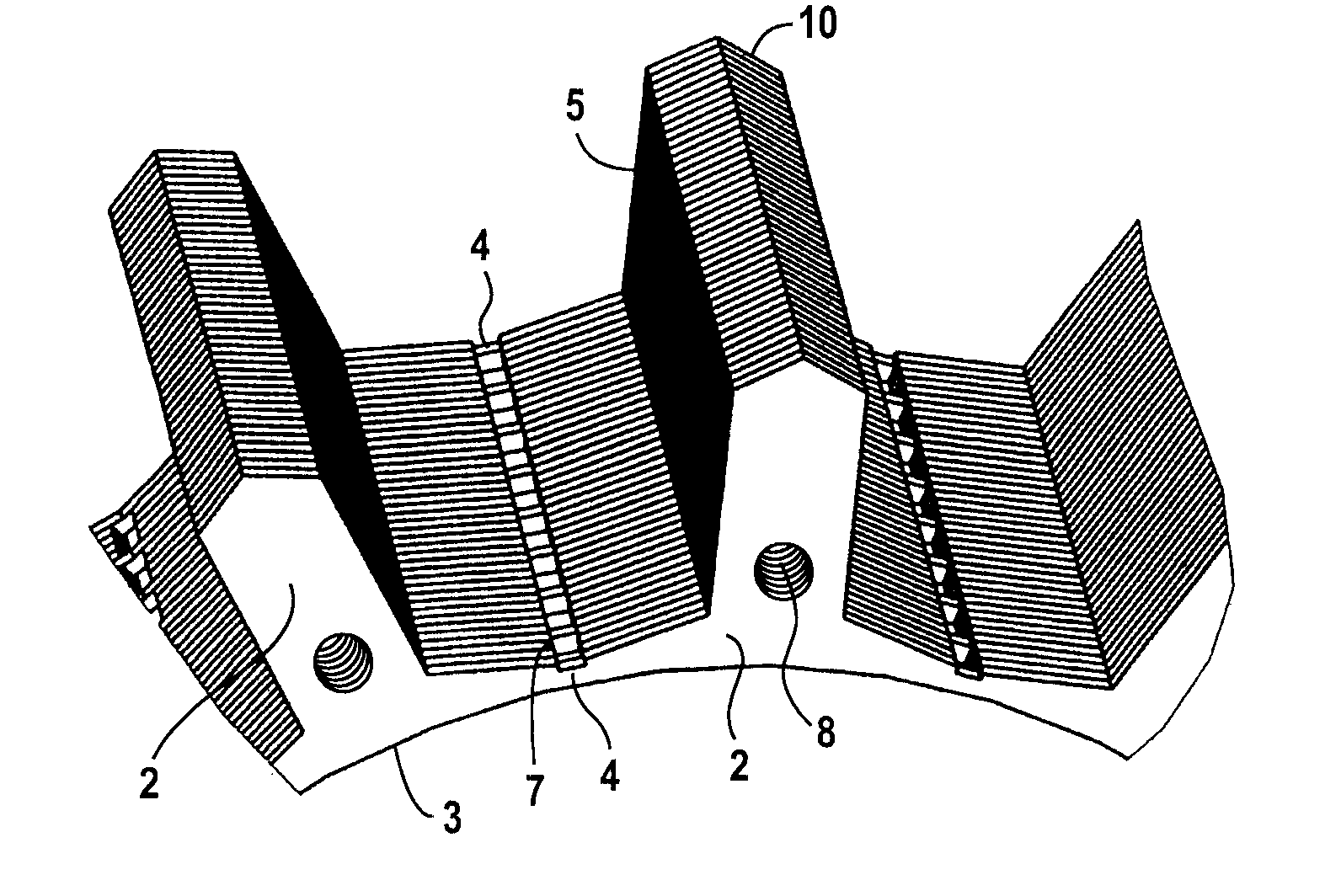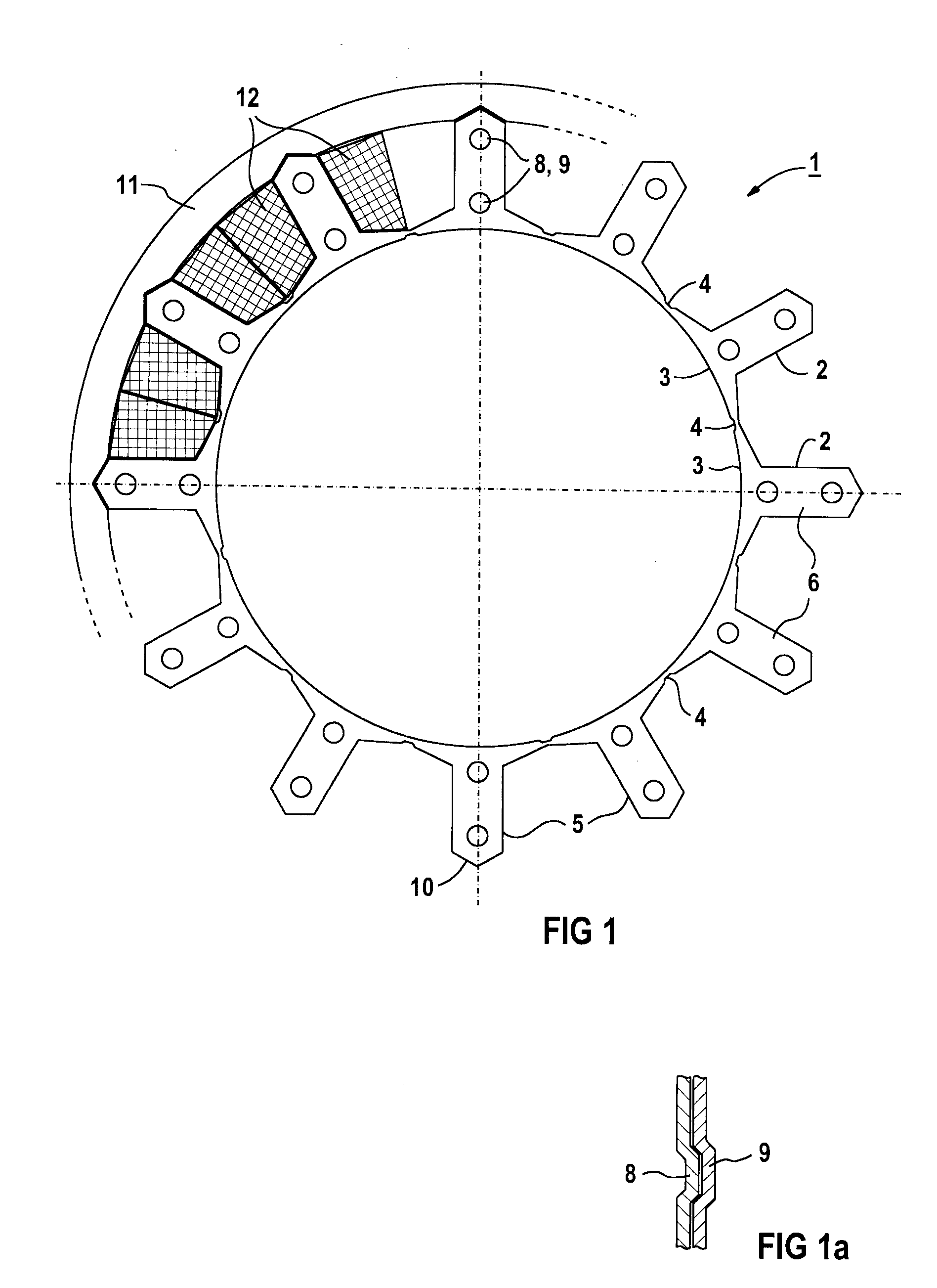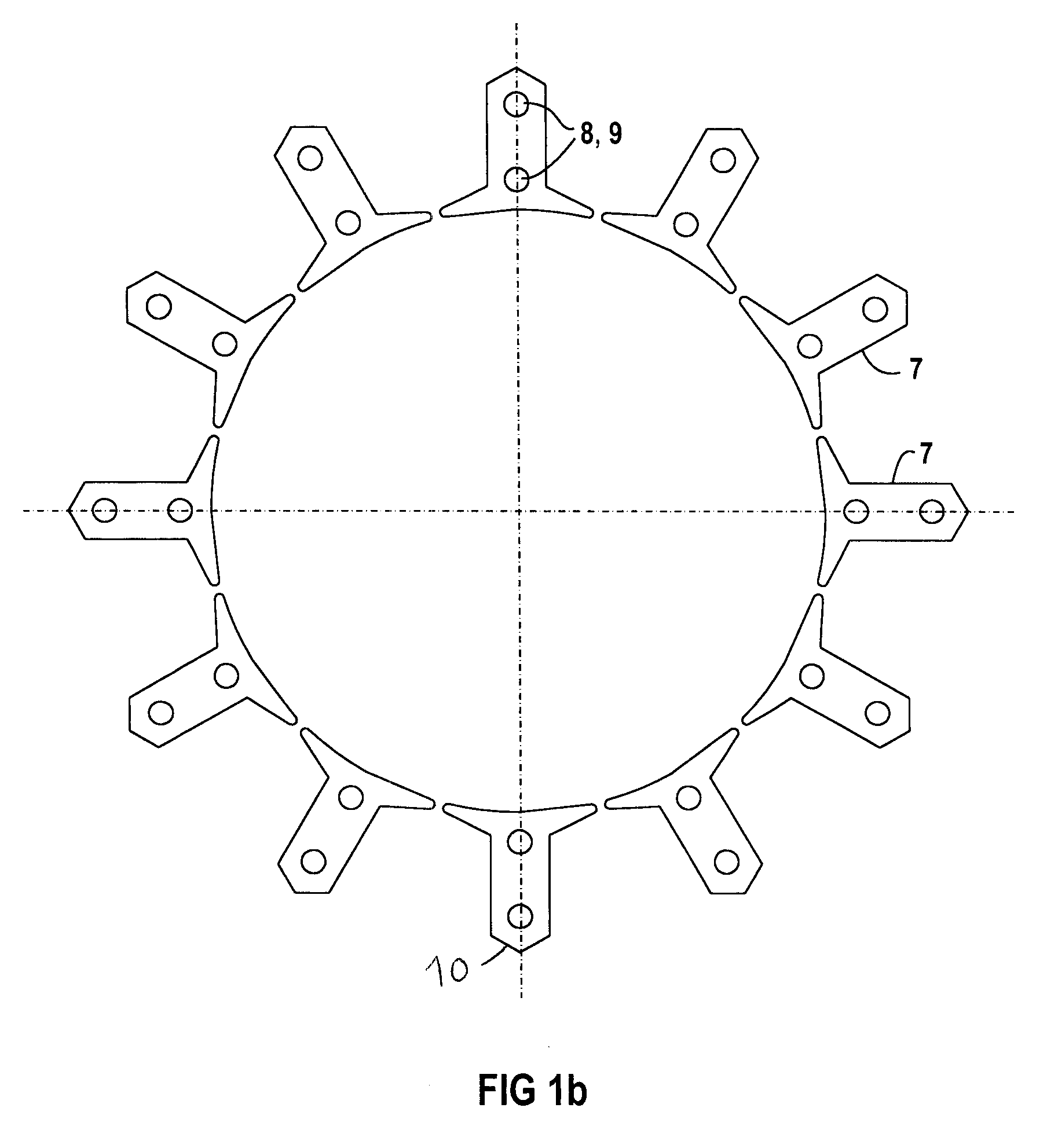Electric motor
a technology of electric motors and stators, applied in the direction of dynamo-electric machines, electrical apparatus, magnetic circuit shapes/forms/construction, etc., can solve the problems of winding fitting problems and achieve optimal alignment, so as to reduce production costs and simplify the effect of production
- Summary
- Abstract
- Description
- Claims
- Application Information
AI Technical Summary
Benefits of technology
Problems solved by technology
Method used
Image
Examples
Embodiment Construction
FIG. 1 shows a cross section of a symmetrical star-shaped laminated core 1 of a stator. A sheet-metal laminate 6 has poles 2 which are arranged in the shape of a star and connected at their pole shoes 3 in the circumferential direction by webs 4 and thereby terminate with the pole shoes 3 flush with respect to a side facing the rotor. It is also conceivable to arrange the webs 4 radially further outward, so that slot opening extensions face the rotor. Also, the webs are made of a material which, preferably, corresponds to the material of the pole shoes 3.
FIG. 1b depicts individual poles 7 that can also be connected by magnetic or non-magnetic clamps.
In the outward direction, pole shanks 5 are preferably formed in a roof-shaped form 10, to thereby permit and facilitate a process of heat shrinkage into a magnetic yoke, as indicated schematically in FIG. 1 by reference numeral 11 and thereby prevent twisting of the star-shaped laminated core 1 of the stator. For shrink or press fits, t...
PUM
 Login to View More
Login to View More Abstract
Description
Claims
Application Information
 Login to View More
Login to View More - R&D
- Intellectual Property
- Life Sciences
- Materials
- Tech Scout
- Unparalleled Data Quality
- Higher Quality Content
- 60% Fewer Hallucinations
Browse by: Latest US Patents, China's latest patents, Technical Efficacy Thesaurus, Application Domain, Technology Topic, Popular Technical Reports.
© 2025 PatSnap. All rights reserved.Legal|Privacy policy|Modern Slavery Act Transparency Statement|Sitemap|About US| Contact US: help@patsnap.com



